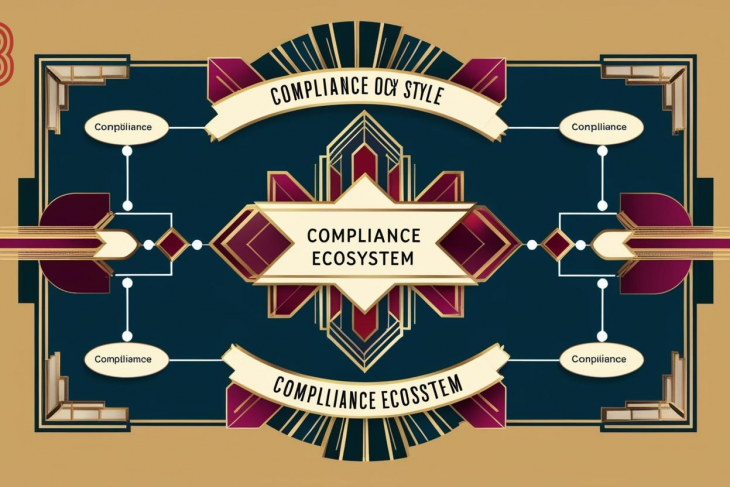
Introduction
Risk management, once a discipline focused primarily on mitigating operational and financial exposures, now finds itself entangled in an evolving regulatory labyrinth. The accelerating pace of regulatory change, driven by globalization, technological advancement, and rising public expectations, has intensified compliance complexity. What was once a supportive pillar of risk mitigation is increasingly becoming an adversarial force—introducing unintended risks, draining resources, and impeding agility. This paradox places organizations in a precarious position: comply and risk strategic stagnation or resist and face legal repercussions.
The Nature of Compliance Complexity
Definition and Evolution
Compliance complexity refers to the degree of intricacy, volume, and volatility inherent in regulatory obligations that organizations must fulfill. Traditionally, compliance involved adhering to a predictable set of rules. However, in today’s environment, regulations are increasingly fragmented, overlapping, and inconsistent across jurisdictions. They span financial reporting, data privacy, cybersecurity, ESG (Environmental, Social, and Governance), anti-bribery, labor rights, and more.
As a result, compliance today is no longer a static or reactive function. It demands continuous monitoring, rapid adaptation, and strategic foresight. For many firms, especially those operating globally or in heavily regulated sectors such as finance and healthcare, managing compliance is akin to navigating a minefield.
Drivers of Increased Complexity
Several converging trends contribute to compliance complexity:
Regulatory Proliferation: National and supranational bodies are enacting more regulations at a faster pace.
Globalization: Multinational operations require navigating different legal systems, often with conflicting mandates.
Technological Innovation: Advancements like AI, IoT, and blockchain invite new regulations that outpace organizational adaptation.
Public and Political Pressure: Societal demands for ethical behavior, transparency, and sustainability increase compliance scrutiny.
Crisis-Driven Legislation: Scandals and systemic failures (e.g., financial crises, data breaches) often lead to sweeping regulatory responses.
These forces create a feedback loop: new risks prompt new regulations, which in turn introduce complexity that can create fresh risks if not properly managed.
Compliance as a Risk Amplifier
Operational Overhead and Resource Strain
An overly complex compliance environment burdens risk management systems with excessive documentation, manual reviews, and bureaucratic overhead. Compliance teams often find themselves bogged down in reporting rather than proactive risk assessment. This siphoning of resources reduces an organization’s capacity to address core strategic or operational risks effectively.
Strategic Paralysis
Firms may become risk-averse not out of prudence, but due to the fear of non-compliance. Overly cautious behavior may inhibit innovation, delay product launches, or lead firms to exit lucrative markets with uncertain regulations. In this sense, compliance complexity transforms into a strategic constraint—reducing agility, suppressing competitiveness, and diminishing long-term value creation.
Fragmented Risk Oversight
When organizations attempt to manage compliance in silos—data privacy in one department, financial regulations in another—they create fragmented risk environments. This lack of integrated oversight can result in blind spots, inconsistent enforcement, and conflicting strategies, leaving the organization vulnerable to systemic threats.
Information Overload
In a data-driven compliance model, organizations collect vast amounts of information. But more data does not necessarily mean better decisions. Without sophisticated analytics and contextual understanding, the deluge of compliance information can obscure critical risks, overwhelming decision-makers and creating analysis paralysis.
Industry Case Studies
Financial Services
The financial sector is perhaps the most regulated industry globally. Banks face overlapping requirements from central banks, financial conduct authorities, anti-money laundering (AML) regimes, and more. The aftermath of the 2008 financial crisis saw a dramatic increase in regulations like Basel III, MiFID II, and Dodd-Frank. While these frameworks aim to enhance systemic resilience, they have also introduced enormous compliance burdens.
A notable example is the cost of AML compliance, which now exceeds $180 billion annually worldwide. Many financial institutions employ thousands of compliance officers, yet still struggle with false positives, transaction monitoring failures, and regulatory fines. Compliance complexity in this sector directly translates into operational risk and reputational damage.
Healthcare and Pharmaceuticals
In healthcare, compliance complexity stems from strict regulatory requirements around patient data (HIPAA, GDPR), drug safety, clinical trials, and public health reporting. For pharmaceutical firms, compliance missteps can delay drug approvals, prompt recalls, or lead to multimillion-dollar settlements.
During the COVID-19 pandemic, firms raced to comply with rapidly changing health directives, vaccine protocols, and emergency use authorizations. Those without agile compliance infrastructures found themselves at a competitive disadvantage, illustrating how complexity can hinder timely and effective response in crisis conditions.
Technology Sector
Technology companies face a dynamic regulatory landscape, especially around data privacy (e.g., GDPR, CCPA), algorithmic transparency, and content moderation. Large platforms like Meta, Google, and Amazon constantly adjust to meet evolving standards. Each jurisdiction adds another layer—e.g., the Digital Services Act (EU), India’s Data Protection Act, and others.
Failure to manage compliance across borders can result in billion-dollar fines or bans. Simultaneously, over-compliance—e.g., excessive data deletion—can limit innovation in AI and analytics. Thus, the tech sector illustrates both the legal and competitive risk of regulatory complexity.
Compliance Technology: Friend or Foe?
Rise of RegTech
Regulatory Technology (RegTech) promises to streamline compliance through automation, AI, and data analytics. Tools that offer real-time monitoring, automated reporting, and policy alignment can reduce the burden on human teams and improve accuracy.
However, reliance on RegTech also introduces new risks:
False Sense of Security: Organizations may over-rely on technology without validating its outputs.
Integration Issues: Siloed tools can exacerbate fragmentation.
Cybersecurity Risks: Cloud-based compliance tools can become targets for cyberattacks, introducing vulnerabilities.
Opaque Algorithms: AI-based compliance systems may lack transparency, making it difficult to audit decisions.
Thus, while RegTech can mitigate complexity, it must be implemented within a robust governance framework.
The Compliance-Risk Management Gap
Cultural Misalignment
One core challenge is the cultural divide between compliance and risk management teams. Compliance is often rule-based and backward-looking, while risk management is typically forward-looking and probability-driven. This disconnect can lead to tension, miscommunication, and suboptimal strategies.
Organizations must foster a unified risk culture where compliance is seen as a risk control function—not merely a legal checkbox. This requires board-level alignment, shared KPIs, and cross-functional collaboration.
Regulatory Arbitrage and Inconsistency
Companies operating across borders may engage in “regulatory arbitrage,” exploiting differences in rules to minimize obligations. While legal, this practice creates ethical dilemmas and reputational risk. Furthermore, inconsistent application of regulations globally makes it difficult to develop uniform policies, creating gaps in coverage or redundancy.
Multinational compliance teams must not only interpret regulations accurately but harmonize them into coherent policies that respect both local nuances and global standards.
Measuring the Impact of Compliance Complexity
Traditional risk metrics often fail to capture the indirect costs of compliance complexity. A more holistic risk framework should consider:
Cost of Compliance vs. Cost of Failure: Weighing compliance costs against the cost of regulatory breaches or operational disruption.
Time to Market: Measuring delays introduced by compliance reviews.
Employee Engagement: Assessing morale in heavily regulated roles.
Innovation Pipeline Health: Gauging how often compliance hinders or alters innovation initiatives.
Risk Velocity: Understanding how quickly compliance-related risks emerge compared to other categories.
Only by integrating such qualitative and strategic metrics can organizations appreciate the full impact of compliance complexity on risk management.
Strategies for Navigating Compliance Complexity
1. Compliance as Strategic Enabler
Rather than viewing compliance as an obstacle, organizations should frame it as a competitive differentiator. Proactive compliance signals trustworthiness to regulators, investors, and customers alike. Embedding compliance into the strategic planning process ensures that innovation and governance evolve together.
2. Adaptive Governance Structures
Traditional hierarchical compliance models are too rigid for today’s fast-moving environment. Instead, firms should adopt modular governance systems that allow for localized decision-making within a unified framework. Risk and compliance committees should be empowered with data-driven insights and real-time escalation channels.
3. Unified Risk-Compliance Platforms
Investing in integrated risk and compliance management systems (GRC platforms) can streamline oversight. These platforms consolidate controls, standardize workflows, and provide dashboards that link compliance activities to business risks. The goal is to create a single source of truth for regulatory obligations and risk exposure.
4. Regulatory Intelligence
Organizations must proactively monitor the regulatory landscape using dedicated teams and tools. Regulatory intelligence platforms use AI to flag upcoming changes, assess their impact, and recommend action plans. This prevents last-minute scrambles and enables strategic response rather than reactive compliance.
5. Training and Risk Culture
A strong compliance culture is rooted in education and empowerment. Employees at all levels should understand not just the “what” but the “why” behind regulations. Gamified training, real-life case studies, and transparent communication from leadership foster accountability and vigilance.
6. Scenario Planning and Stress Testing
Complex regulations can have unintended second-order effects. Scenario planning helps organizations anticipate how new regulations might interact with business models. Stress testing compliance systems under various scenarios reveals weak points before they lead to breaches.
Summary
Compliance complexity has emerged as a stealthy adversary in modern risk management. While regulations are designed to protect systems and stakeholders, their proliferation and intricacy can inadvertently hinder risk oversight, strategic decision-making, and operational resilience. Organizations that fail to address this complexity may find themselves exposed not by external threats, but by the very safeguards they sought to install.
Navigating this challenge requires a paradigm shift—viewing compliance not as a burdensome necessity, but as an integral component of strategic risk management. With the right tools, culture, and governance, firms can turn compliance from a cost center into a source of competitive strength.
In an age of rising uncertainty, mastering compliance complexity is not just a regulatory requirement—it is a strategic imperative.




















